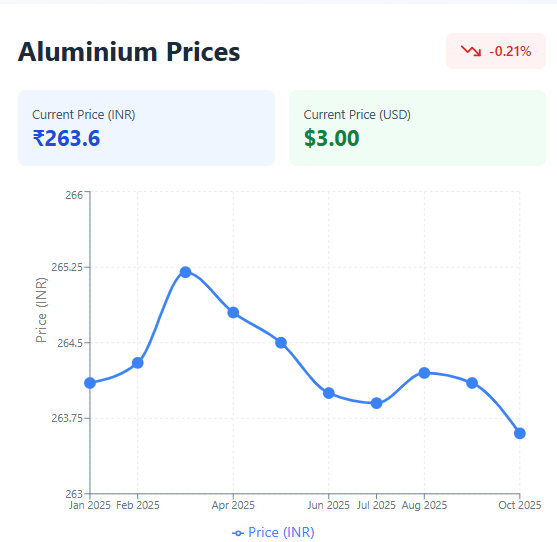

Aluminium markets were cautious this week, with renewed trade concerns between the US and China weighing on sentiment. Financial research firm Kedia Advisory reported aluminium settling down by 0.21 per cent at INR 263.6 (USD 3), reflecting investor unease over global demand trends.

Output caps and trade diplomacy
Markets grew jittery after the US Treasury Secretary Scott Bessent confirmed President Trump’s upcoming meeting with Chinese leader Xi Jinping in late October. The timing adds uncertainty just as China trimmed its base metals output growth target from 5 per cent to 1.5 per cent annually for 2025–2026.
Beijing’s move aligns with its 45 million tonne aluminium production cap, an effort to curb deflationary pressures. This change indicates a tighter supply context but is insufficient to pull weak sentiment in the near term.
Supply tightness meets soft demand
On the supply side, the closure of Alcoa’s Kwinana alumina refinery in Australia on deteriorating ore grades added a layer of uncertainty. Global fundamentals remain firm. According to World Bureau of Metal Statistics (WBMS) data: a deficit of 119,900 tonnes in July was recorded, and a cumulative shortfall of 985,300 tonnes was recorded between January and July 2025.
Yet, demand signals are mixed. Investments in data centres and stronger Chinese PMI readings offer some support. But exports fell; China shipped 521,000 tonnes of unwrought aluminium in September, down from August’s 534,000 tonnes.
Also Read: China's aluminium imports surge in July'25
US imports slow as tariffs bite
The trade drag is visible in US numbers too. Primary aluminium imports into the US slipped 2 per cent in H1 2025, reaching 1.81 million tonnes compared with 1.85 million tonnes last year. The first quarter was brisk as traders front-loaded shipments ahead of tariff hikes, but momentum soon faded as the second quarter unfolded.
March imports hit 438,000 tonnes, but volumes softened sharply from April onwards. Canada still leads US supply with a 52 per cent share, but the UAE and India increased their shipments, filling some gaps left by China.
China’s decline under tariff pressure
Washington doubled Section 232 tariffs on aluminium to 50 per cent in mid-2025, squeezing Chinese exports. The removal of exemptions and tighter customs checks redirected flows to Asia and the Middle East.
This policy backdrop, combined with China’s domestic output restraint, sets the stage for further price volatility ahead of the high-level Trump–Xi meeting.
Read More: Escalating China-US trade tensions to weigh on aluminium prices in the short term
Responses








